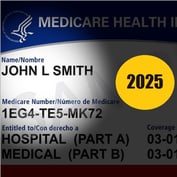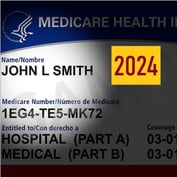One of the most common questions I hear from agents is very simple: “Should I be selling Medicare supplement or Medicare Advantage?” Generally, I give two rather unsatisfying answers. The first is, “If a Medicare beneficiary is both willing and able to pay the premium for a Medicare supplement, sell the Medicare supplement.” My second answer is, “It depends.” Of course, this begs the question, “It depends on what?”
Supplement vs. Advantage: points of comparison
My next few articles will review the differences between Medicare Advantage and Medicare supplement. In this, the first article in the series, I’ll provide a brief overview of the different facets of comparison. Throughout this series, I’ll look more closely at each of the following:
- Relative value: Since they work differently, it’s hard to directly compare the relative value of Medicare Advantage and Medicare supplement. It’s much easier and more relevant to compare the value of Medicare Advantage with Original Medicare Parts A and B. Medicare supplement acts as the Secondary Payer to original Medicare, so Original Medicare can be used as a proxy for Medicare supplement.
- Agent considerations: Medicare supplement and Medicare Advantage are regulated by different governmental agencies, and I’ll discuss the ease of doing business with each product. In addition to regulation, we will look at the compensation paid to the agent for each product.
- Network considerations: When a client chooses a Medicare Advantage product, there will be limits placed on their ability to access medical care. This depends on the type of Medicare Advantage chosen (HMO, PPO, or Private Fee for Service) and the quality of the individual plan’s network. Conversely, Original Medicare’s network is made up ENTIRELY of providers approved by Medicare. Thus, network can be an important consideration.
- Value adds: Medicare Advantage can provide additional benefits not available with Original Medicare. Examples of these value-added benefits include: dental, vision, hearing, transportation, gym membership, and wellness, among others.
- Care coordination and disease management: Original Medicare provides very limited coordination of care or management of diseases. Many Medicare Advantage plans offer advanced services in these areas.
- Prescription drug considerations: With network-based Medicare Advantage (HMO or PPO), the beneficiary must elect the Medicare Prescription Drug benefit included in the plan if he or she wants prescription drug benefits. With Original Medicare, beneficiaries can choose from any stand-alone prescription drug plan (PDP).
- Future insurability: Medicare supplement can require underwriting to qualify for coverage. Medicare Advantage is guaranteed issue (except for End Stage Renal Disease) during the Annual Enrollment period.
- Client preferences: Finally, I’ll look at the choice with the client’s risk tolerance, health status, and budget in mind.
Having outlined the eight facets of our comparison, for the balance of this article, let’s begin with a more-in depth look at our first point of comparison, relative value.
What is relative value?
Since Medicare supplement is a complementary product to Original Medicare, an increase in the value of Original Medicare increases the appeal of a Medicare supplement. So, when deciding whether to sell Medicare Advantage or Medicare supplement, a comparison of the underlying coverage is important.
Relative value is a comparison of the actuarial value of the benefits included under Medicare Advantage and those included under Original Medicare.
Since each of these products are heavily subsidized by the federal government, it’s impossible to use the Medicare beneficiary’s premium cost as a tool of comparison. Instead, there are two methods I use to compare relative value on a national basis. First, I look at the amount of federal government money used to subsidize each of these programs. Second, I examine the market share of each product. Assuming Medicare beneficiaries are rational consumers, logic dictates that they will gravitate toward the product with the higher value.
Changes in funding
Now, let’s look at the federal cost to provide Medicare Advantage benefits versus Original Medicare benefits. You may recall that during last year’s health care debate, President Obama cited a statistic that Medicare Advantage costs 14 percent more to the taxpayer than Original Medicare. This statistic came from MedPAC, an independent advisory committee to Congress. MedPAC performs an annual analysis to calculate this statistic, but although the citation was made in 2010, the statistic quoted was based on the 2009 Medicare Advantage plan year.
Since the Federal Government was pumping 14 percent more subsidy into Medicare Advantage, this made these products very attractive in 2009. However, new legislation has slowed the trend. In fact, the relative value of Medicare Advantage peaked in 2009 and has been falling ever since.
The first major funding cut came from the Medicare Improvement for Patients and Providers Act (MIPPA), passed in July 2008. When this bill was passed, however, the reimbursement rates for 2009 were already set in stone, which meant that the impact of the funding cuts weren’t felt until plan year 2010. When MedPAC reported the relative cost for Medicare Advantage for plan year 2010, the impact of MIPPA had already reduced the differential from 14 percent to 9 percent.
The second round of cuts came as part of the Patient Protection and Affordable Care Act (PPACA). This bill was signed by President Obama on March 23rd, 2010 and included a mandated freeze on Medicare Advantage funding for plan year 2011. The impact of the funding freeze brought about by PPACA has yet to be measured (MedPAC will report this in June 2011), but it’s reasonable to assume that it has shrunk to the 5-7 percent range.
Although the gap is shrinking, there is still a higher subsidy for Medicare Advantage – enough to make this plan a compelling value-proposition for many Medicare beneficiaries, especially those who are relatively healthy. However, looking forward to plan years 2012 and beyond, PPACA will result in further cuts to Medicare Advantage.
Rate of growth
Next, let’s take a look at the growth rate of Medicare Advantage for years 2007 through 2010. In 2007 and 2008, Medicare Advantage experienced double digit growth rates of 18.5 percent and 14.5 percent, respectively. In 2009, the growth rate slowed a bit, but remained extremely strong at 9.9 percent. In 2010, as the impact of MIPPA began to be felt, the grow rate slowed to 5.1 percent.








 May 17, 2011 at 08:00 PM
May 17, 2011 at 08:00 PM










